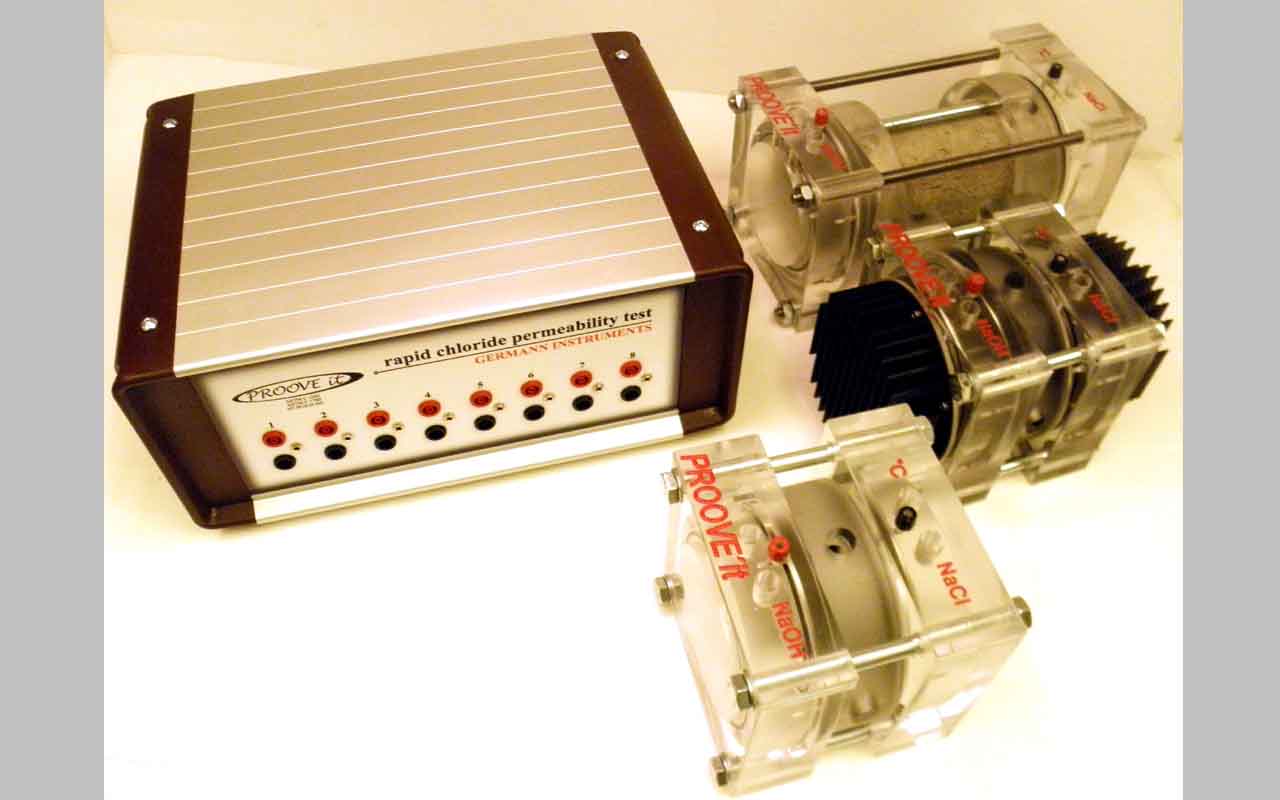Description
ASTM C1202-RCPT Test
 ASTM C1202 “Standard Test Method for Electrical Indication of Concrete’s Ability to Resist Chloride Ion Penetration” is actually a test of electrical conductance, rather chloride permeability as is often stated. As discussed on page 88, electrical conductivity is related to the diffusion coefficient. In this test, a water- saturated concrete specimen, nominally 100 mm diameter and 50 mm thick, is positioned in a test cell (right and pg. 121) containing fluid reservoirs on both ends of the specimen. One reservoir is filled with a 3 % NaCl solution and the other with a 0.3N NaOH solution. An electrical potential of 60 VDC is applied across the cell. The negative terminal of the potential source is connected to the electrode in the the NaCl solution and the positive terminal is connected to the electrode in the NaOH solution. The negatively charged ions will migrate towards the positive terminal resulting in current through the specimen. The current is measured.
ASTM C1202 “Standard Test Method for Electrical Indication of Concrete’s Ability to Resist Chloride Ion Penetration” is actually a test of electrical conductance, rather chloride permeability as is often stated. As discussed on page 88, electrical conductivity is related to the diffusion coefficient. In this test, a water- saturated concrete specimen, nominally 100 mm diameter and 50 mm thick, is positioned in a test cell (right and pg. 121) containing fluid reservoirs on both ends of the specimen. One reservoir is filled with a 3 % NaCl solution and the other with a 0.3N NaOH solution. An electrical potential of 60 VDC is applied across the cell. The negative terminal of the potential source is connected to the electrode in the the NaCl solution and the positive terminal is connected to the electrode in the NaOH solution. The negatively charged ions will migrate towards the positive terminal resulting in current through the specimen. The current is measured.
The more permeable is the concrete, the more negative ions will migrate through the specimen, and a higher current will be measured. The current is measured for 6 hours. The area under the curve of current versus time is determined, which represents the total charge or Coulombs passed across the specimen. Test results are corrected for a standard specimen diameter of 95 mm.




Reviews
There are no reviews yet.